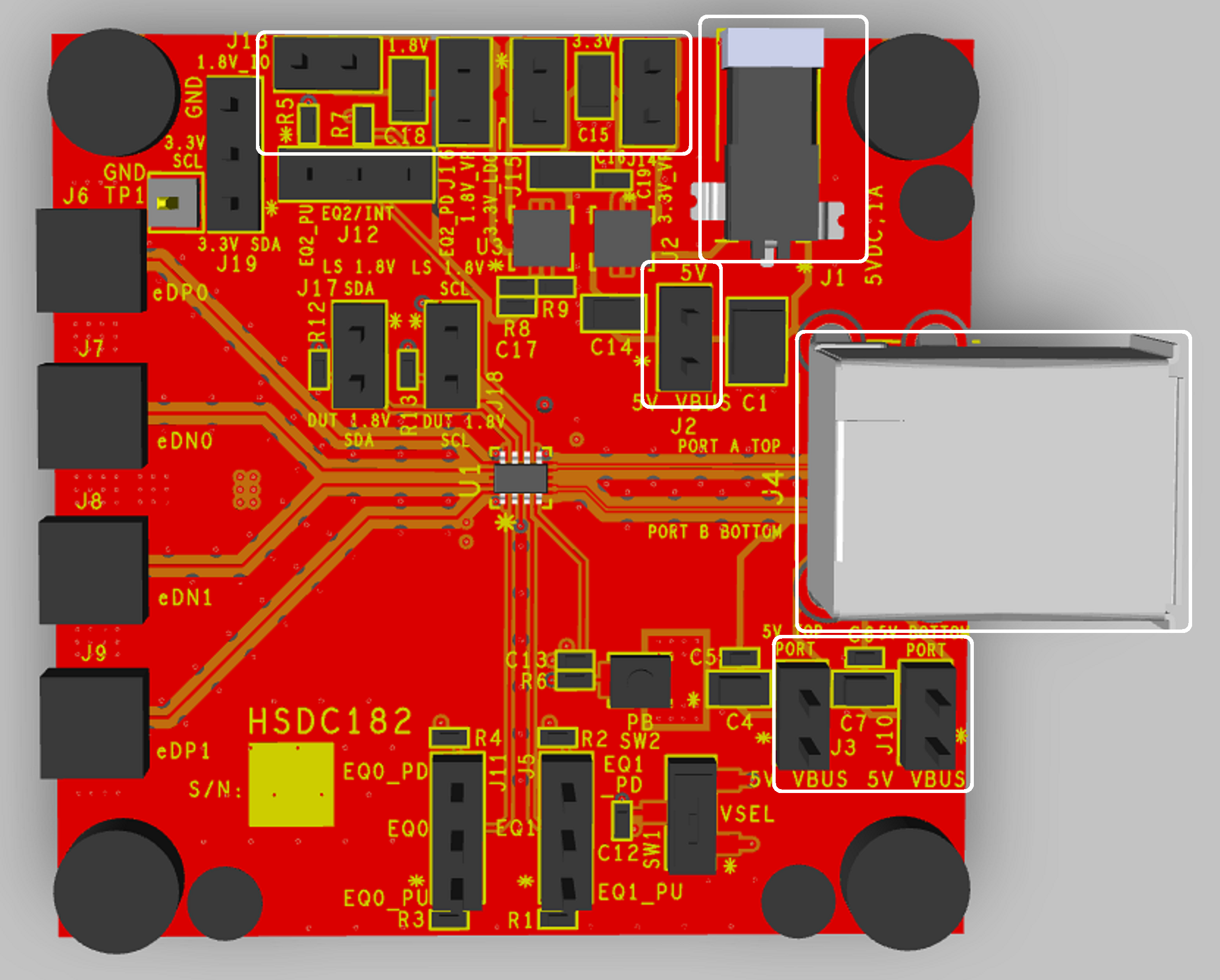SNLU354 November 2024 TUSB2E221
2.2.1 Power Modes
 Figure 2-1 TUSB2E221QFNEVM Power Configuration Overview
Figure 2-1 TUSB2E221QFNEVM Power Configuration OverviewThe TUSB2E221 requires two supply voltages during normal operation. The 3.3V and 1.8V supply can be provided directly from an external source on pin 1 of the J14 and J16 headers. The TUSB2E221QFNEVM also includes two onboard LDOs which generate 3.3V and 1.8V from a 5V power supply. The 5V supply can be provided through the USB connectors, or provided through a 5V wall power supply.